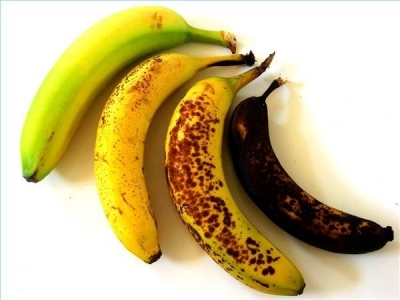
 “Temperature changes can delay or hasten the ripening of banana. Banana is a tropical fruit, adapted to ripen quickly at a certain stage of its development and at a particular temperature and humidity. It continues to ripen after harvest, with more and more of its starch converted into sugars by the action of enzymes. When harvested, a banana contains about 20 per cent starch and only 1 percent sugar. By the time the fruit is ripe, the proportions are reversed.
“Temperature changes can delay or hasten the ripening of banana. Banana is a tropical fruit, adapted to ripen quickly at a certain stage of its development and at a particular temperature and humidity. It continues to ripen after harvest, with more and more of its starch converted into sugars by the action of enzymes. When harvested, a banana contains about 20 per cent starch and only 1 percent sugar. By the time the fruit is ripe, the proportions are reversed.
Banana also releases comparatively large quantities of ethylene gas to help itself ripen; the gas will even ripen other fruit put in a bag with a ripening banana.
Bananas are usually harvested when still green, cutting off the supply of nutrients at the stem, and then shipped at a temperature low enough to slow the action of the enzymes of ripening. Later, the bananas are brought back up to a temperature and humidity that let the enzymes become active again.
To high a temperature destroys the enzymes, and too low a temperature can break down the cell walls of the fruit so the contents mix and the fruit oxidizes browns and soften abnormally. The optimum temperature and humidity conditions for ripening are about 20 degree C and 90-95 per cent relative humidity. Storage temperatures should be about 13 degree C.
”
The details can also be taken from NYT article: http://www.nytimes.com/1998/02/10/science/q-a-490229.html as originally this article has been published as link submitted above.
